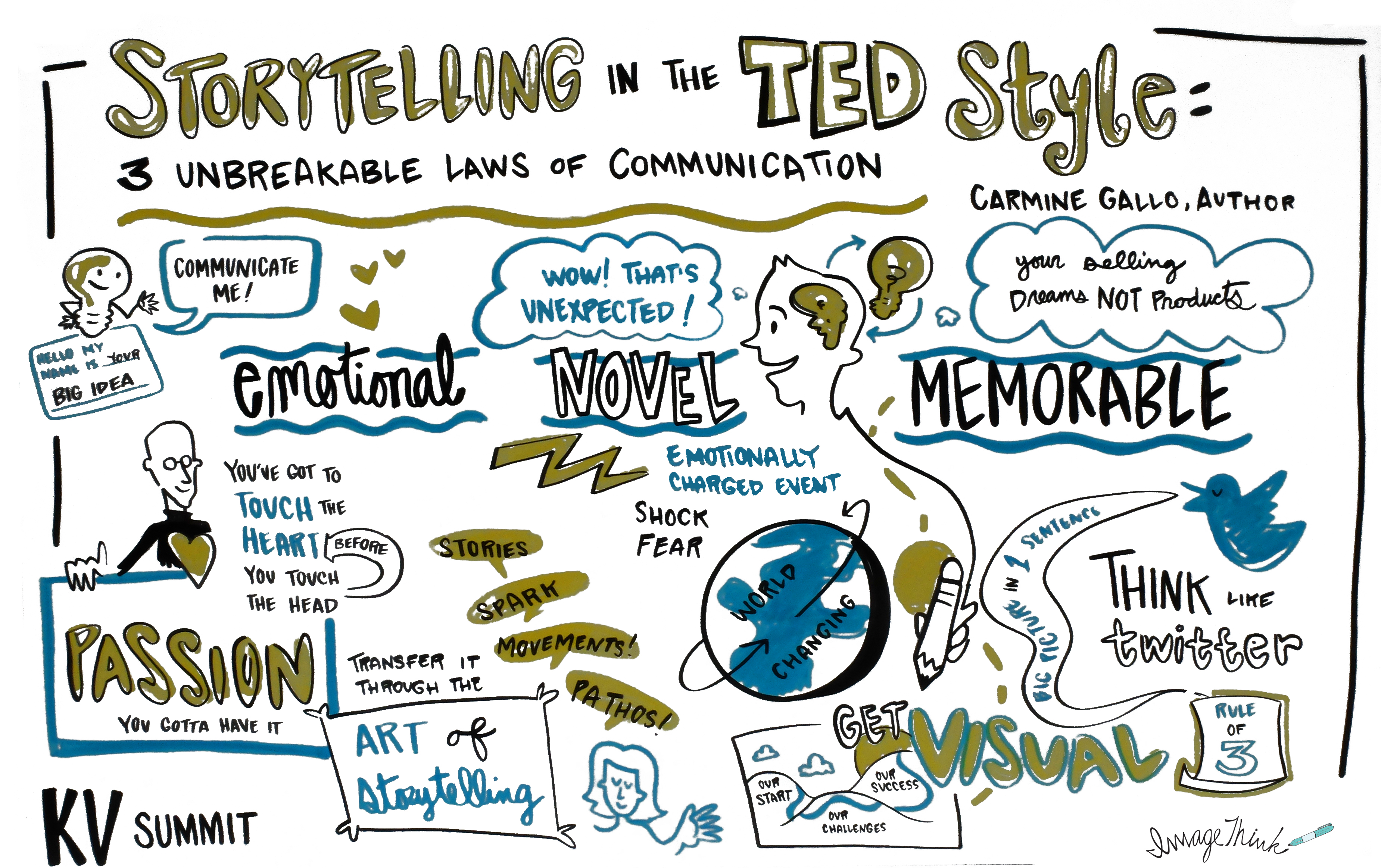Carmine Gallo, communication coach and author of several bestselling books, discusses why the ability to communicate ideas and tell persuasive stories is the single greatest skill that will help move brands and products forward.
This post also appears on Forbes.
Ideas that spread all share the following the three components. They are:
1. Emotional
Persuasion occurs when you touch a person’s heart before reaching their head. Passion is everything. You cannot inspire and persuade unless you’re inspired yourself. Steve Jobs wasn’t passionate about computers. He was passionate about designing tools to help people unleash their personal creativity. Zappos founder Tony Hsieh didn’t focus on shoes because that’s not what he’s passionate about. Shoes might be what his company sells online, but Hsieh is passionate about delivering happiness—what makes customers happy and what makes employees happy. A passion for happiness allows Zappos to grow in so many more directions than it otherwise would have if Hsieh had decided to build an online company that strictly sold shoes.
Before you pitch your company story ask yourself, “What makes my heart sing?” The answer to that question is your passion and should set the foundation for the rest of your conversation.
You can transfer your passion through the emotional connection that stories provide. Stories inform, illuminate and inspire. A remarkable thing happens to our brains on stories. Researchers at Princeton University are finding that if I tell you a story, the same regions of our brain show blood flow in fMRI studies. That means our brains are in-sync. Astonishingly, the same research finds that if I tell you a story in another language that you don’t understand, the MRI will not show the same results. It’s not the fact that I’m speaking that connects us; it’s the story that creates meaningful connections between two people.
Using TED talks for my analysis, I spent 500 hours researching public presentations that went viral. In some cases the presentation had been viewed up to 20 million times. The best speakers spend 65-percent of the presentation telling stories that reinforced the theme of their talk (data and statistics made up 25-percent of the content and establishing credibility contributed the remaining 10-percent). Data and statistics are very important for investors, but make no mistake—you must connect with investors, employees and other stakeholders on an emotional level if you hope to inspire those audiences to back your ideas.
2. Novel
Ideas that spread teach us something new. According to Berkeley neuroscientist Dr. A. K. Pradeep, “Our brains are trained to look for something brilliant and new, something that stands out, something that looks delicious.”
Ideas stick when they are packaged as new, surprising and unexpected—something ‘delicious.’ When the brain detects something unexpected or surprising, it immediately says, “Oh, here’s something new. I’d better pay attention.” The chemical dopamine is released, which acts as your brain’s natural save button. Dopamine is so important to retention and learning that when it’s present we tend to remember an experience or a message. When it’s absent, nothing seems to stick.
In my presentation, I asked the audience to raise their hands if they had seen the video of Steve Jobs launching the first iPhone in 2007. I then asked those who had raised their hands which part of the presentation they remember. “The part where he introduced three products,” one person called out. “I predicted you would say that, which is why I’m going to show you that portion right now,” I said as I rolled the video of the presentation. Every time I ask the question I get the same answer. Steve Jobs introduced the product in a way that was unexpected, surprising and novel. He told the audience that Apple would introduce three products—an mp3 player, a phone and an “internet communicator.” Jobs then slowly repeated the products several times before revealing, “Aren’t you getting it? These are not three separate devices. This is one device and we’re calling it the iPhone.” The brain cannot ignore novelty.
3. Memorable
Ideas that spread are easy to recall. You can have great ideas and a great story, emotional and novel, but if nobody can remember what you said it doesn’t matter! Memorable stories are shared, spreading the message much further than its immediate audience. Here are three techniques for delivering a memorable pitch or presentation.
- Create a “Twitter-friendly” headline. The brain craves meaning before details. People need to see the big picture before details. When Steve Jobs introduced the MacBook Air for the first time he called it, “the world’s thinnest notebook.” In one sentence you get it immediately, and it fits in a Twitter post of 140 characters. At the KV Summit I was impressed by how many entrepreneurs had refined their message to one powerful sentence.
- Use pictures instead of text whenever possible. Neuroscientists who study the field of persuasion use the phrase “picture superiority” to describe the visual display of information. It simply means that people remember ideas better when they are presented as pictures and words instead of words alone. If I deliver information verbally, you’re likely to remember 10-percent of what I said. If I add a picture, retention soars to 65-percent.
- Stick to the rule of three. The rule of three simply means that in short-term or “working” memory, most of us can only carry about three pieces of information. If you give investors 18 reasons to back your idea, they’ll forget the entire list. Give them three compelling reasons supported by stories, examples and statistics.
Ideas are the currency of the 21st century. You are only as valuable as the ideas you have to share, but if you cannot persuade enough other people to take action on those ideas, ideas are just neurons firing off in your brain. Failing to captivate your listeners with your story has disastrous consequences—products fail to sell, ideas fail to get funded and careers fail to soar. Your ideas are meant to be heard. They might very well change the world. Tell your story persuasively to capture the imagination of your audience.

